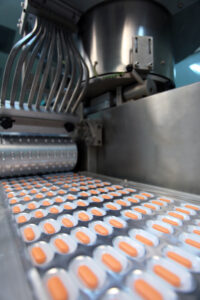Product liability is a law that states companies can be held liable for injuries caused by any unsafe or defective products they make or sell. This not only protects the consumer but also holds companies accountable and encourages them to make safe products.
The personal injury lawyers at Regan Zambri Long firmly believe knowledge is power. In this article, we will explore the complexities of product liability law, including the substantial factor test, and break it down so you can fully understand your claim. If you have more questions, contact a Regan Zambri Long product liability lawyer for a free consultation. We will answer your questions, assess your case fairly, and lay out all your legal options.
Contact Us Today to Schedule
a Free Consultation
To break down the ins and outs of a product liability case, let’s start by learning what tort law is and isn’t.

Tort law, including product liability, is different from criminal law. Criminal law is punishable by the state and is meant to penalize the defendant’s actions rather than award financial compensation for the plaintiff’s injury.
The substantial factor test is a legal principle that asks if a product’s defect was a substantial factor in causing your injury. Notice the keyword there: cause. The causation of your injury will inform your entire product liability case.
Causation refers to whether or not the defendant’s action is the actual cause of your injury. In product liability claims, legal causation would mean the defective product directly caused the plaintiff’s injuries. In any personal injury case, you must establish causation to win.
For example, you might buy a pressure cooker with a faulty lid due to a manufacturing defect. The lid may explode while you’re cooking, causing your hand to be severely burned. The defect in the product—the faulty lid—would directly cause your burned hand.
The proximate cause of an injury narrows down the broader term “causation.” This asks if the product’s defect was in close enough proximity to your injury to hold it responsible for the accident.
An example of a proximate cause would be a woman wearing high stiletto heels who walks up a flight of stairs. She slips on the stairs and breaks her leg. The insurance company or court will decide if the slippery staircase or the unstable stiletto heels were the proximate cause of her injury.
The but-for test helps prove causation. The test asks, “But” for the product defect, would the injury have happened? A classic example is prescription medication. You took medicine prescribed by your doctor with a known side effect of dizziness. You take the medication as directed and then go for a walk. During the walk, you become dizzy, stumble, and fall, breaking your arm.
The but-for test would analyze the significant contributor to the injury. But for the medication, you would not have felt dizzy, leading to your fall. However, for the medication, your injury would likely not have happened. In this scenario, the but-for causation seems to be the side effect of the medication.
Concurrent liability is when two or more parties are liable for the independent or concurrent causes of a victim’s injuries. It analyzes the independent actions of two people with a combined effect. Here’s an example:
You go out for a ride on your new bike. Unknown to you, the new bike was poorly manufactured and had faulty brakes. During your ride, you come up to an intersection where you have the right of way and proceed. A motorist texting while driving doesn’t notice you and continues approaching the intersection without slowing down. Seeing the car, you try to brake but can’t due to the brakes. The distracted driver doesn’t stop in time and hits you, causing severe injuries.
In that example, the concurrent liability theory would likely hold two parties accountable for your injuries: the bike manufacturer and the negligent motorist. Although their actions were independent of each other, both contributed a substantial factor in causing your injuries.
These legal terms may be confusing. However, we will explore how a Regan Zambri Long product liability attorney will prove legal cause and liability in your case. They will combine the tests above and gather evidence to win your claim.
Determining Factual Causation
As we discussed before, this is the crux of your claim. The but-for test, substantial factor test, concurrent liability—it all boils down to figuring out the actual cause of your injury. Remember that as we explain how we’ll determine causation and liability.
Your attorney will establish that the defective product and the defendant’s conduct were the actual cause of your injury. To make this determination, they will pour over medical records and product manuals and seek expert testimony to link the defect in the product to the harm caused.
Using the But-For Test
Substantial Factor Test
Proximate Cause
Concurrent Liability
The Regan Zambri Long product liability lawyers will search for physical evidence from the accident scene, including video footage, photos, accident reports, and eyewitness statements. They will consult with expert witnesses, accident reconstruction specialists, and medical consultants. They will personally contact the manufacturer and the company selling the product that caused harm.

Toxic torts are injuries or illnesses caused by the plaintiff’s exposure to toxins, chemicals, and other hazardous materials. Unlike a product used only once and resulting in injury, toxic torts involve exposure over time. We often see such cases as a result of workplace injuries resulting from asbestos-related diseases.
Because of the time, it’s more difficult for the plaintiff’s lawyer to pinpoint the exact cause of the illness or injury. This is where everything we’ve talked about comes into play: the substantial factor test, but-for test, proximate cause, and concurrent liability. Here’s how these tests are applied in a toxic tort case:
Exposure to toxins can come from multiple sources, making the substantial factor test particularly important in these cases. This will help determine if the defendant’s conduct or product (the toxin) was a substantial factor in causing the plaintiff’s illness.
The but-for test can be more difficult to apply in toxic tort claims. Because a victim is exposed to various toxins or chemicals for a long time, it’s hard to say if they wouldn’t have gotten sick “but for” the toxin or if there were other potential causes of the illness.
The product liability lawyer will investigate if the defendant’s product was close enough to cause the illness in the plaintiff. Duration of the illness, level of exposure, known dangers of the toxin, and scientific evidence to back up the claim must be presented to prove proximate causation.
While the causation issue is essential to any personal injury claim, it doesn’t make up the entire case. The plaintiff must also establish three other key elements of personal injury law: duty, breach of duty, and damages.
The Regan Zambri Long law firm practices in three jurisdictions: Washington, D.C., Virginia, and Maryland. In both Washington, D.C. and Maryland, the victim of a product liability case has three years from the date of the accident to file a claim. In Virginia, the victim has two years to file a claim.
This may seem like a long time; however, as you can see, proving product liability cases is often complex and time-consuming. You should speak with a personal injury lawyer and file a claim as soon as possible following your accident. The quicker you file your claim, the quicker you can reach a fair settlement.
While the substantial factor test can seem complicated, understanding how it applies to your case is crucial. If a defective product has injured you, you don’t have to navigate the legal claims process alone. Our product liability lawyers are here to be your champions and advocates.
The experienced product liability attorneys at Regan Zambri Long can help you understand your rights and fight for your deserved compensation. Contact Regan Zambri Long today for a free legal consultation, and let us help you secure the justice you deserve.